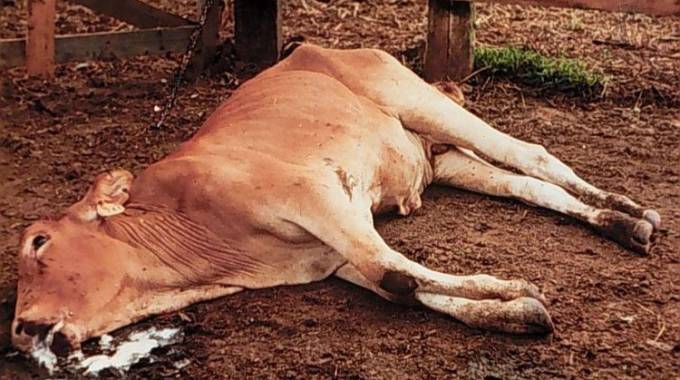
The Sunday Mail

Senior Reporter
At least 300 000 cattle died last year owing to drought and disease, a latest national report has revealed.
According to the Second Round Crop and Livestock Assessment Report 2019/2020 Season, over 66 000 cattle died because of shortages of water and pastures.
The most affected provinces include Matabeleland South, Matabeleland North and Masvingo.
Despite losing over 198 000 cattle in 2019, Masvingo Province remains home to the highest number of beasts with over 1 million.
Matabeleland North had the highest rate of cattle mortality at 16 percent.
Overally, the national herd fell from over 5,7 million to 5,4 million cattle between 2018 and 2019.
“Beef cattle reduced by 5,7 percent from 5 774 525 cattle in 2018 to 5 443 770 cattle in 2019,” reads the report in part.
“The major reasons for the reduction in numbers include drought, which led to reduced productivity, drought and disease-related deaths and forced sales and slaughters related to both drought and diseases.
“The condition of beef cattle is generally fair to good in most districts, except in some parts of Beitbridge, Chiredzi, Matobo, Mberengwa, Bubi and Umguza.”
Cattle mortality, according to the report, remained high and contributed to the decimation of the national herd.
According to the report, most deaths were a result of tick-borne diseases such as theileriosis, anaplasmosis (Gall sickness), babesiosis (Redwater) and heartwater.
Provinces prone to cattles diseases included Mashonaland East, Mashonaland West, Mashonaland Central and parts of Manicaland.
“The grazing (pastures) condition at the time of assessment was mostly fair, except in Beitbridge, Gwanda, Tsholotsho, Buhera and Bulilima districts.
“The condition of grazing is expected to deteriorate as the season progresses.
“Available grazing is expected to last from four to eight months in most districts.
“The southern districts will have grazing challenges as availability will last up to June (this month) and animals will need alternative feed sources like hay and supplementary feeds.
“For the other provinces, communal areas will have a shortage of grazing due to overstocking on generally poor quality veld.”
The report also shows that the number of cattle slaughtered at abattoirs last year dropped by 12 percent from 266 220 in 2018 to 235 018 in 2019. Milk production, however, grew by 6 percent to 79 million litres, which is still lower than the national target of 120 million litres annually.
“Total milk production increased by 6 percent, from 75 422 158 litres in 2018 to 79 896 215 litres in 2019.
“Milk production continues to show growth. However, the current production levels are still short of the 120 million litres for national requirements. The current dairy herd stands at 39 856 animals, with 19 022 milking cows. The national target for milking cows (is) to meet and exceed requirements is 32 000.
“Average production per cow per day was 14 litres. The smallholder dairy sector still contributes about 4 percent of national milk production. Productivity remains low due to the high cost of breeding stock, stock feed and veterinary drugs.”
Day-old broiler chick production fell by 18 percent to 74 million in 2019 from 91 million in 2018, owing to high costs of production and reduced consumption. Egg production, however, increased by 24 percent from 36,4 million dozens in 2018 to 50,4 million dozens in 2019.
The figure is still lower that the 2016 high of 55,3 million dozens.”
Meat production also fell from 143 000 tonnes to 114 000 tonnes, a change of 20 percent.



